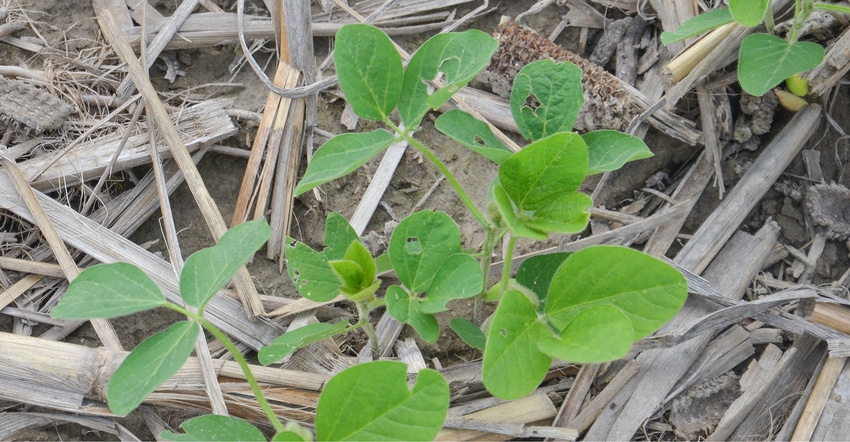
Soybeans are known for their ability to adapt and compensate in a variety of conditions. Can they compensate for late planting and still produce good yields? Shaun Casteel, Purdue University Extension soybean specialist, dug into other seasons with delayed planting over the past 25 years to answer this question.
“What we know for sure is that since planting was delayed for the bulk of soybeans in Indiana this year, the critical period will be moved back on the calendar,” Casteel says. He originally made these comments during a webinar with Jim Mintert and Michael Langemeier, both of the Purdue Center for Commercial Agriculture, and Bob Nielsen, Purdue Extension corn specialist, at the end of May. By then, the die was already partially cast for 2019.
The critical period for soybeans is usually the three weeks or so during the heart of the reproductive stage, when pods form and fill. Typically, that’s in August, Casteel says. That’s when ample rainfall and seasonal temperatures promote good pod fill. “Expect that critical period to be the latter part of August and into September this year,” he emphasizes.
Even though soybeans respond to photoperiod to begin flowering and trigger the reproductive stage, they’re also impacted by temperatures and growing degree day accumulations. Maturity will be moved back this year, meaning the reproductive stages will occur later than normal for the bulk of the crop.
Other delayed-planting years
To see how delayed planting can impact yield, Casteel selected five years over the past 25 years where soybeans planted in Indiana didn’t reach 50% until very late May or well into June. All five years were significantly delayed compared to the current five-year average for soybean planting percentage by specified dates. Based on the five-year average, before 2019, soybean planting is usually 50% complete in the state by mid-May.
Here are the five late planting years Casteel studied and the approximate dates soybean planting reached 50%: 1995, June 4-6; 1996, June 16-18; 2002, May 30-June 1; 2009, May 29-31; and 2011, June 3-5.
So how did these years fare on trend yield? Indiana statewide soybean yields were below trend yield in four of the five years. Soybean yield statewide averaged 1 bushel per acre above trend yield in 2009.

“It’s not surprising that soybean yields would be lower than trend yield when a large share of the crop was planted in June,” Casteel says. In fact, the bigger surprise is that the yield dips for late planting were not larger than what he found, he says.
Agronomics would suggest a 10% or more yield loss moving into June plantings. The only year of the five Casteel examined with 10% yield loss was 1996, where 50% of soybean acres planted wasn’t achieved until mid-June. Put differently, even in 1996, the year of slowest planting progress for soybeans in the past 25 years before 2019, the decline was only 10%. That amounted to 4.2 bushels per acre below trend yield.
What’s the bottom line? The story on 2019 soybean yields won’t be evident until at least mid-September this year, Casteel concludes.
About the Author(s)
You May Also Like




